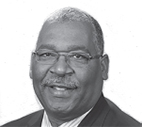According to U.S. Census data, the official poverty rate in 2020 was 11.4 percent, resulting in 37.2 million people living in poverty. In addition, Census data indicates that between 2019 and 2020, the poverty rates increased for non-Hispanic Whites and Hispanics. Among the major racial groups, African-Americans had the highest poverty rate at 19.5 percent. Given what we know about this country’s social and racial inequities, these numbers may not be surprising. However, when pondering these numbers, I asked myself the question: How do the people within these numbers live? One question that came to mind is whether it costs more to be poor or not. A quick answer is yes. There are many ways poverty can increase costs for those living in poverty.
Let’s discuss.
Housing
As expected, many impoverished individuals may not qualify for a mortgage. Therefore, they typically rent. Consequently, these people cannot take advantage of one of the significant benefits of being a homeowner: The ability to build wealth through home equity. In addition, individuals with lower incomes who may be able to afford a home are limited to older ones in poor condition, which leads to higher maintenance costs.
Food
Consider that many people who live in poverty not only pay a higher percentage of their income for food but may also pay higher prices. In some instances, individuals living in poverty reside in areas that are considered “food deserts.” That means that these areas lack large stores that can provide fresh fruits and produce at affordable prices. In many cases, these areas contain convenience stores or discount stores, which don’t have healthy options and tend to be more expensive.
Due to the limited capacity of these small stores, those living in poverty cannot buy food in bulk, which would provide better savings. As a result, those individuals with higher incomes are more likely to have access to larger stores, such as Costco or Sam’s Club, or stores that stock cheaper, generic brands. In addition, those living in poverty often lack the transportation to access these stores.
Transportation
Not many argue that transportation is a much-needed necessity. However, despite the best efforts of many cities, there are often limited public transportation options, which is even more problematic in rural areas. Barriers to transportation include financing, maintenance, fuel costs, and proper insurance.
Health care
In addition to health complications that may develop due to living conditions containing lead or mold, limited access to preventive care medicine means those living in poverty tend to have higher rates of chronic diseases such as diabetes, heart disease, and hypertension. Even dental and vision care may not be easily accessible, leading to more costly long-term health conditions.
Financial services
Families living in poverty also face many challenges related to financial management. Considering all of the factors mentioned above that can contribute to the cost of being poor, lower credit scores — leading to more expensive loan rates, whether mortgage, auto, or credit cards — make individuals living in poverty resort to predatory lenders to make ends meet. Businesses such as rent-to-own centers and payday lending agencies prey on the poor and perpetuate the cycle of poverty by charging higher interests and unrealistic loan terms. These conditions can lead to a never-ending cycle of debt.
Perhaps the most disturbing aspect of the cost of poverty is that it is often an issue that is generational. The children of those living in poverty are also more likely to suffer from the same poor economic conditions as their parents as they grow.
So how do we address this issue? The first step is to remove the stigma surrounding people experiencing poverty. We must stop blaming the victims and realize that people don’t choose to be poor. As a society, we must realize that escaping the cycle of poverty is not easy, and we must have empathy and understanding of those trapped in this cycle. There must be a realization that those who have never been poor may not fully understand the trauma associated with this condition and that those living in poverty are not looking for a handout but a hand up and a way out.


Recent Comments